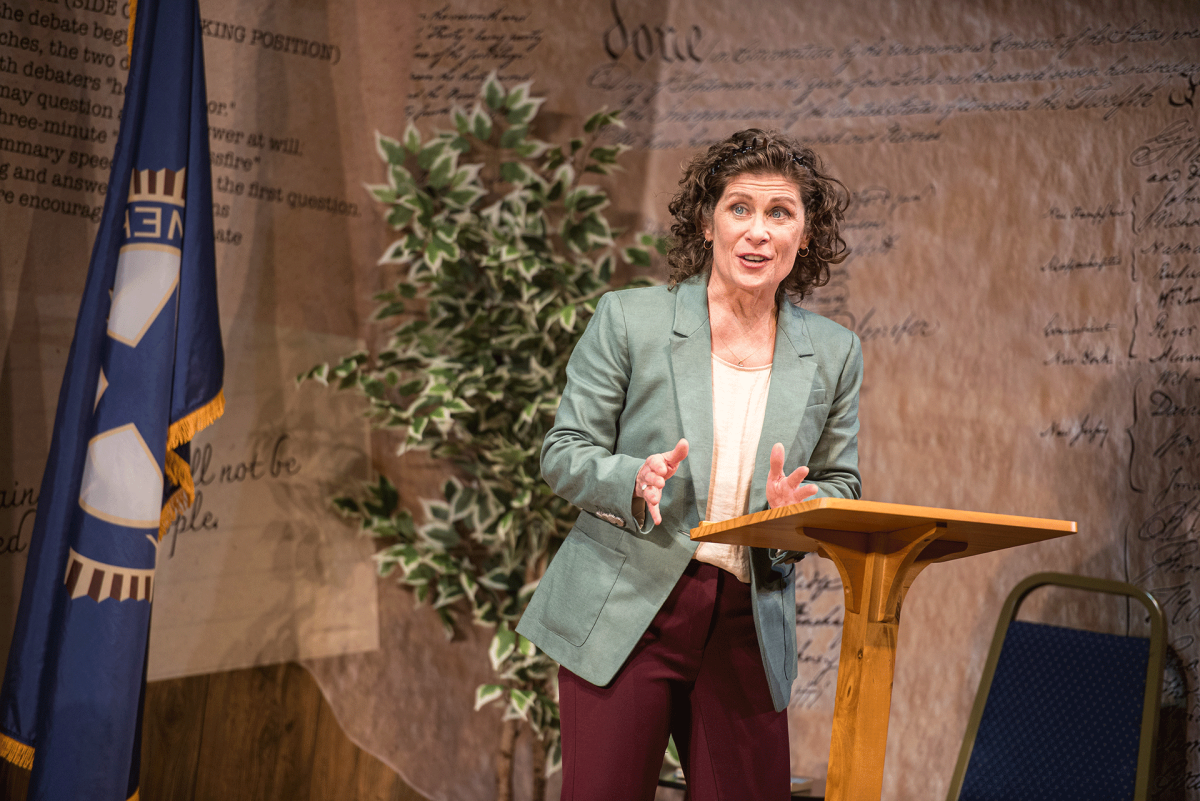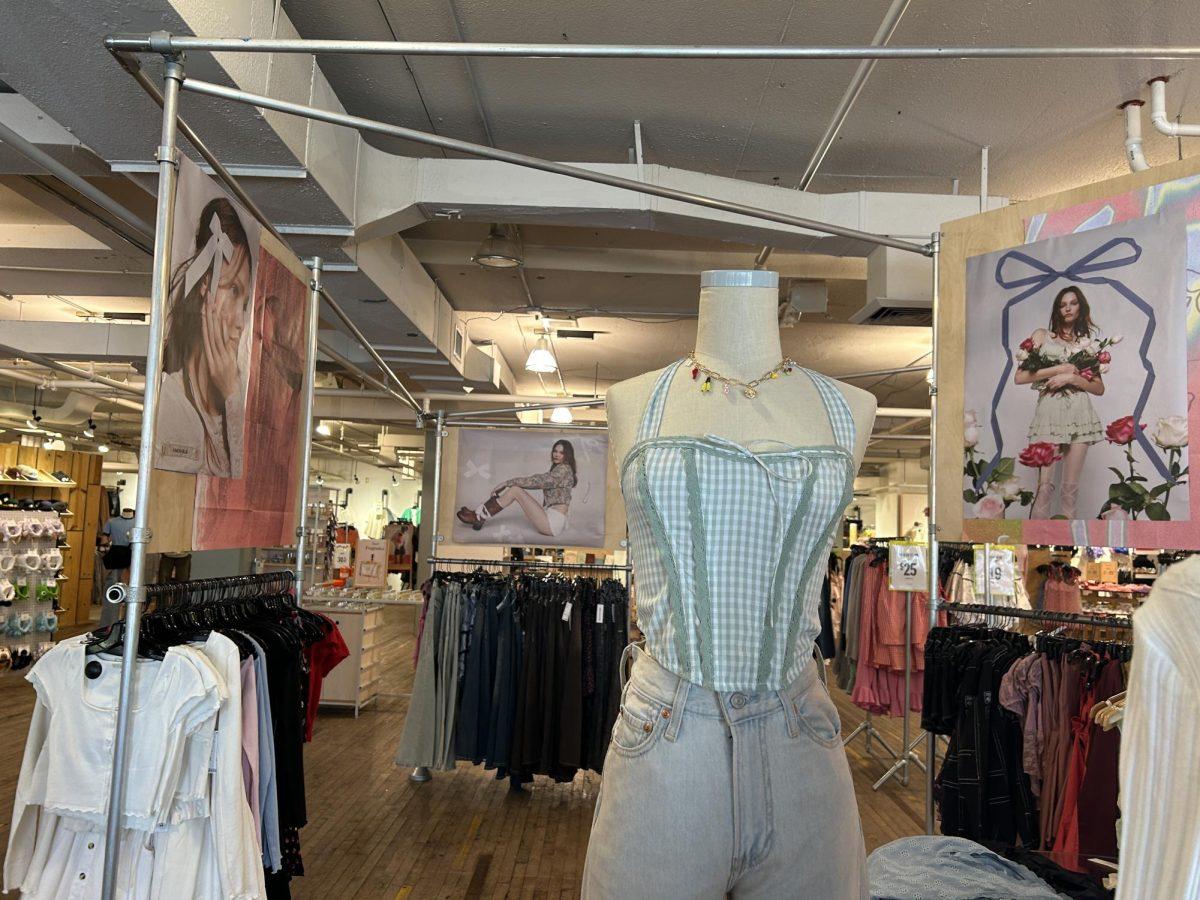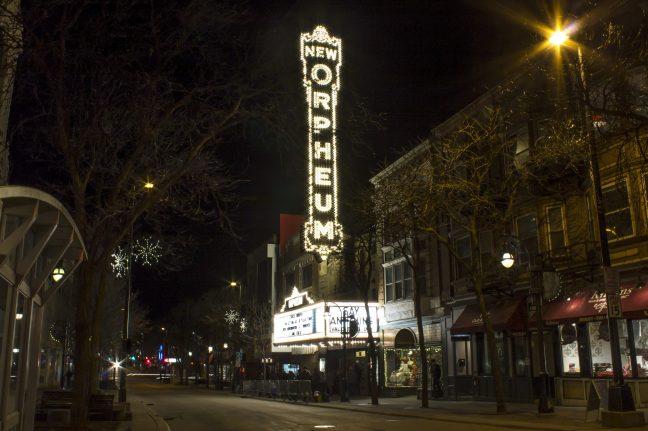Being proud of the University of Wisconsin-Madison’s infamous agriculture department, artists visiting for this year’s Invitational Neon and Light Art Exhibition were invited to display their light-inspired works in the campus stock pavilion. The ground and air were free of manure, and the artists visiting from schools across the country didn’t seem to mind displaying their works in a building that is normally used to parade and judge cattle. While some artists came from as far as Las Vegas and New York for the two-day event that took place over the weekend, many of the featured works were created by UW students and local artists.
Beginning in 1988 with only a small group of artists involved, the now biannual exhibition attracts dozens of artists with fortes ranging from sculpture to hologram design. The show, entitled “Light as a Medium,” featured the works of artists who had somehow incorporated light into their work, whether by actually using neon light tubes to design images or by using lights to create shadows of sculptures. Some additions of light in the works were as simple as adding white Christmas lights, as was done with the tree-light-stuffed translucent human forms that greeted visitors as they entered the pavilion. The addition of simple light sources in other works created more dramatic effects.
In Phillip Causse’s “Faces in the Night,” the direct placement of single votive candles in front of his reverse sculptures’ faces “engages the passerby with the illusion of a moving face.” By simply observing the shadows created by the flicker of the candle, the faces of a Pueblo Indian and the Sphinx appear to follow viewers as they walk by. While the sculptures themselves showed amazing detail, it was the inclusion of a light source that made the pieces so intriguing and captivated viewers as they passed.
Russell Germain’s “Nice to Meet You” also used light to add movement to its otherwise stationary appearance. The sculpture of primarily bronze and aluminum is the figure of a headless woman with disproportioned features. Similar to an animated character from Tim Burton’s “The Nightmare Before Christmas,” the figure’s bulging torso with six drooping breasts was supported by unusually thin legs. The woman, who held a mask in place of where her head should have been, is standing on a sort of fashion runway with five flashing strobes at its end. The lights seem to act as blinking camera bulbs that impose shadows on the wall behind the figure and create the movement of what could be interpreted as her turn at the end of the runway. The piece as a whole is very symbolic, as the multiple breasts and overflowing womb implies the motherly role women are to fulfill, while at the same time the long thin legs and mask-face suggest the unreasonable model appearance many women strive to obtain.
In contrast to the previously discussed works, Jaclyn Kampmeier’s “Infected Imports” highlighted the formation of the light sources themselves instead of the sculpture. Several old cigar boxes were stacked on a fishnet-covered table with dozens of newspaper roses. While the detail of the roses was impressive enough, the real centerpiece of the work were the tiny globular balls of light that seemed to grow from the ancient boxes. Like mold forming on antiques, the spores varied in size and concentration. Most amazingly the tiny bulbs progressively changed colors with gradual shifts appearing in single bulbs. The artist had not used separate light sources for each bulb, but had varied the color in different neon bulbs behind the globs, successfully creating a soothing, dreamy presence.
One of the few hologram pieces on display, Lottie Meyer’s “Holygram,” combined a hologram image of the Virgin Mary with metal bars to create a sort of puzzle-like image of the religious icon. After a brief discussion with another hologram artist from Chicago, I was utterly confused by the process of creating a hologram, but understood that it has something to do with the crossing of laser light waves through a mirror. Technical aspects aside, Meyer’s piece was interesting, as it tricked the eye by placing the two-dimensional appearance of metal on top of the three-dimensional effects of a hologram.
Beyond the dozens of other light-influenced pieces on display, the exhibition offered a chance for visitors to see glass work in progress. One artist, who made the entire process look like child’s play, blew glass tubes by using a blow torch and some sort of straw he blew into with his mouth. As visitors watched, he created tubes and shapes that were similar to many of the forms found throughout the exhibition. Although the artist made the process of glass blowing look like something anyone could pick up as a hobby, the pieces throughout the exhibition were proof that working with glass is a talent that takes skill and discipline.
The exhibition also had a student glass sale, with many affordable glass pieces (created by students of the UW-Madison Glass Program) for sale. The pieces for sale complemented the talent of the UW students’ pieces that were featured in the show. And while the visiting artists’ works were equally impressive, the exhibition of their work in this area would not be possible if it was not for the continual efforts of Madison’s local art community.














